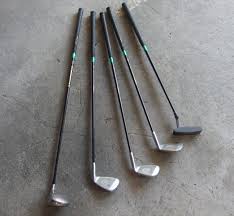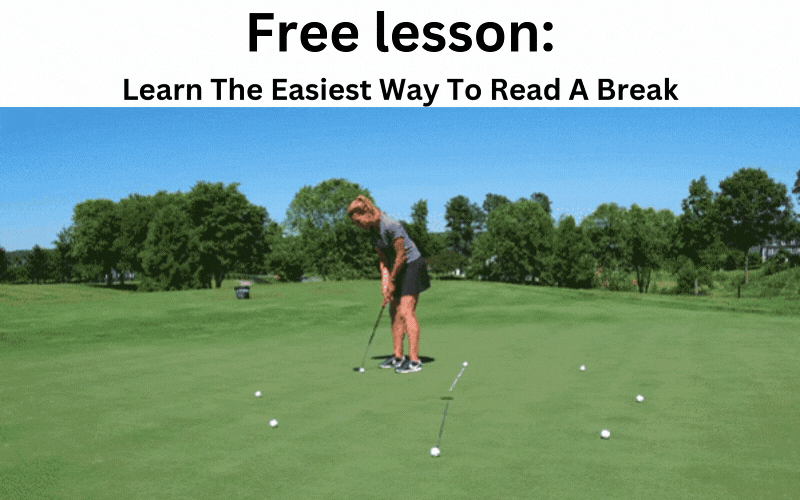
Maximizing Your Swing: The Science of Golf Club Distance and Selection
Golf is a game of precision, skill, and patience. And when it comes to maximizing your swing, there's no denying the importance of having the right golf club set with the perfect distance and selection.
But what makes one club better than the other? Is it the length, weight, or material that determines the distance of your shot?
I have explored the science behind golf club selection and distance, and I'm here to share my insights with you.
In this article, we'll delve deep into the factors that affect the distance of your golf swing and explore the different types of golf clubs that can help you achieve your desired results.
Whether you're a seasoned pro or a beginner, this guide will help you understand the science of golf club distance and selection, and aid you in maximizing your swing. So, let's get started!
Understanding the Basics of Golf Club Selection
Before delving into the science of golf club selection and distance, it's important to understand the basics of golf club selection.
Golf clubs are categorized into four main types: woods, irons, wedges, and putters. Each type of golf club has unique characteristics that determine its distance and suitability for different shots.
### Woods
Woods are the longest golf clubs, and they are typically used for tee shots. They have a larger clubhead than other types of golf clubs, which allows them to generate more power and distance.
Woods are numbered from 1 to 5, with the 1-wood being the longest and most powerful. The 3-wood and 5-wood are also popular choices for tee shots, as they provide a good balance of distance and accuracy.
### Irons
Irons are the most versatile golf clubs, and they are used for a variety of shots. They are numbered from 1 to 9, with the 9-iron being the shortest and most lofted.
The lower-numbered irons (1-4) are used for longer shots, while the higher-numbered irons (5-9) are used for shorter shots and shots that require more loft.
### Wedges
Wedges are a type of iron golf club that is designed to provide more loft and spin. They are used for shots that require a high trajectory, such as bunker shots and chip shots.
Wedges come in a variety of lofts, including pitching wedges, sand wedges, and lob wedges.
### Putters
Putters are the shortest golf clubs, and they are used for shots on the green. They have a flat clubface that is designed to roll the ball smoothly along the ground.
Putters come in a variety of shapes and sizes, and choosing the right putter is essential for good putting.
Factors That Affect Golf Club Distance
Now that we've covered the basics of golf club selection, let's explore the factors that affect golf club distance.
There are several factors that determine how far a golf ball will travel, including the type of golf club, its length, weight, and material. Let's take a closer look at each of these factors.
### Type of Golf Club
As we mentioned earlier, each type of golf club has unique characteristics that determine its distance. Generally speaking, woods are the longest golf clubs, followed by irons, wedges, and putters.
However, the distance of your shot also depends on the loft and lie angle of the club, which we'll discuss in more detail later.
### Length of Golf Club
The length of your golf club also plays a significant role in determining the distance of your shot. Longer golf clubs typically generate more power and distance, but they also require more skill and accuracy to control.
Shorter golf clubs, on the other hand, are easier to control but may not generate as much distance.
### Weight of Golf Club
The weight of your golf club affects the speed and trajectory of your shot. Heavier golf clubs typically generate more power and distance, but they may be more difficult to swing.
Lighter golf clubs are easier to swing, but they may not generate as much power.
### Material of Golf Club
The material of your golf club can also affect the distance of your shot. Most golf clubs are made from either steel or graphite.
Steel golf clubs are heavier and more durable, while graphite golf clubs are lighter and more flexible. Graphite golf clubs can generate more clubhead speed, which can lead to more distance.
The Science Behind Golf Club Selection
Now that we've covered the factors that affect golf club distance, let's explore the science behind golf club selection. To maximize your swing, you need to choose the right golf club for your swing speed, swing path, and ball flight.
### Swing Speed and Clubhead Speed
Swing speed and clubhead speed are two of the most important factors in golf club selection.
Swing speed refers to the speed at which you swing the golf club, while clubhead speed refers to the speed at which the clubhead travels through the air. The faster your swing speed and clubhead speed, the more distance you can generate.
### Loft and Lie Angle
The loft and lie angle of your golf club also play a significant role in determining its distance. The loft of a golf club refers to the angle of the clubface relative to the ground. The higher the loft of a club, the more loft and spin it will generate.
The lie angle of a golf club refers to the angle between the shaft and the ground. The lie angle affects the direction of your shot and can also affect the distance of your shot.
### Choosing the Right Golf Club
To choose the right golf club for your swing, you need to consider your swing speed, swing path, ball flight, and the conditions of the course. A golf club that is too long or too heavy can lead to inconsistent shots and poor accuracy.
A golf club that is too short or too light can result in a lack of distance and power. It's important to experiment with different golf clubs and find the ones that work best for your swing.
Common Mistakes to Avoid When Selecting Golf Clubs
Choosing the right golf club can be a daunting task, especially for beginners. Here are some common mistakes to avoid when selecting golf clubs:
### Choosing Golf Clubs Based on Brand
Many golfers make the mistake of choosing golf clubs based on the brand name rather than the performance of the club. It's important to choose golf clubs that work best for your swing, regardless of the brand.
### Choosing Golf Clubs Based on Price
Another common mistake is choosing golf clubs based on price rather than performance. While it's important to stay within your budget, it's also important to invest in golf clubs that will help you improve your game.
### Choosing Golf Clubs Without Testing Them
Finally, many golfers make the mistake of choosing golf clubs without testing them first. It's important to test different golf clubs and find the ones that work best for your swing.
Tips for Maximizing Your Golf Club Distance
Now that we've covered the basics of golf club selection and distance, let's provide you with some tips to help you maximize your golf club distance.
### Practice Your Swing
The key to maximizing your golf club distance is to practice your swing regularly. Focus on improving your swing speed and clubhead speed, and work on increasing your flexibility and strength.
### Improve Your Ball Striking
Improving your ball striking is another important factor in maximizing your golf club distance. Focus on hitting the sweet spot of the clubface, and work on your accuracy and consistency.
### Use the Right Golf Ball
Using the right golf ball can also help you maximize your golf club distance. Choose a golf ball that is designed for your swing speed and ball flight, and experiment with different brands and models.
###Get Custom Fitted for Golf Clubs
Finally, getting custom fitted for golf clubs can help you maximize your golf club distance. A custom fitting session can help you find the golf clubs that work best for your swing, and can also help you improve your accuracy and consistency.
The Benefits of Custom Fitting for Golf Clubs
Custom fitting is a process that involves measuring your swing characteristics and finding the golf clubs that work best for your swing.
A custom fitting session can help you improve your accuracy and consistency, and can also help you maximize your golf club distance.
### Improved Accuracy and Consistency
Custom fitting can help you improve your accuracy and consistency by finding the golf clubs that work best for your swing.
A custom fitting session takes into account your swing speed, swing path, ball flight, and other factors to find the golf clubs that will help you hit more accurate and consistent shots.
### Maximizing Your Golf Club Distance
Custom fitting can also help you maximize your golf club distance by finding the golf clubs that generate the most distance for your swing.
A custom fitting session takes into account your swing speed, swing path, ball flight, and other factors to find the golf clubs that will help you hit longer shots.
### Improved Comfort and Confidence
Finally, custom fitting can also improve your comfort and confidence on the golf course. Golf clubs that are custom fitted to your swing will feel more comfortable in your hands, and you'll have more confidence in your ability to hit accurate and consistent shots.
Conclusion
Choosing the right golf club with the perfect distance and selection is essential for maximizing your swing. The distance of your shot is determined by various factors, such as the type of golf club, its length, weight, and material.
The science behind golf club selection and distance involves understanding your swing speed, swing path, ball flight, and the conditions of the course. By following the tips and advice provided in this article, you can improve your accuracy, consistency, and distance on the golf course.
And if you want to take your game to the next level, consider getting custom fitted for golf clubs to maximize your golf club distance and improve your comfort and confidence on the course.
